It is a challenging exercise today, to think of painting from the Chinese world as a collective body, to track its shifting contours and influences. Just ten years ago, the mention of contemporary Chinese art would immediately evoke images with identifiable markers, like the blown-up heads from the 1990s by Cynical Realists Fang Lijun or Yue Minjun.
Although there have been a great many painters since the 1980s, working in diverse styles and languages, up until the early 2010s many of them shared a common investment in the traditions and history of Chinese painting – whether the heritage of socialist realism or the use of ink – and in the depiction and invention of culturally specific signs. But now, that seems to be yesterday’s story when we look to a younger generation of painters. The five profiled here were all born after the mid-1980s in Mainland China and Taiwan, trained both domestically and abroad, and are currently based around the world, from Shanghai to Los Angeles to Paris.
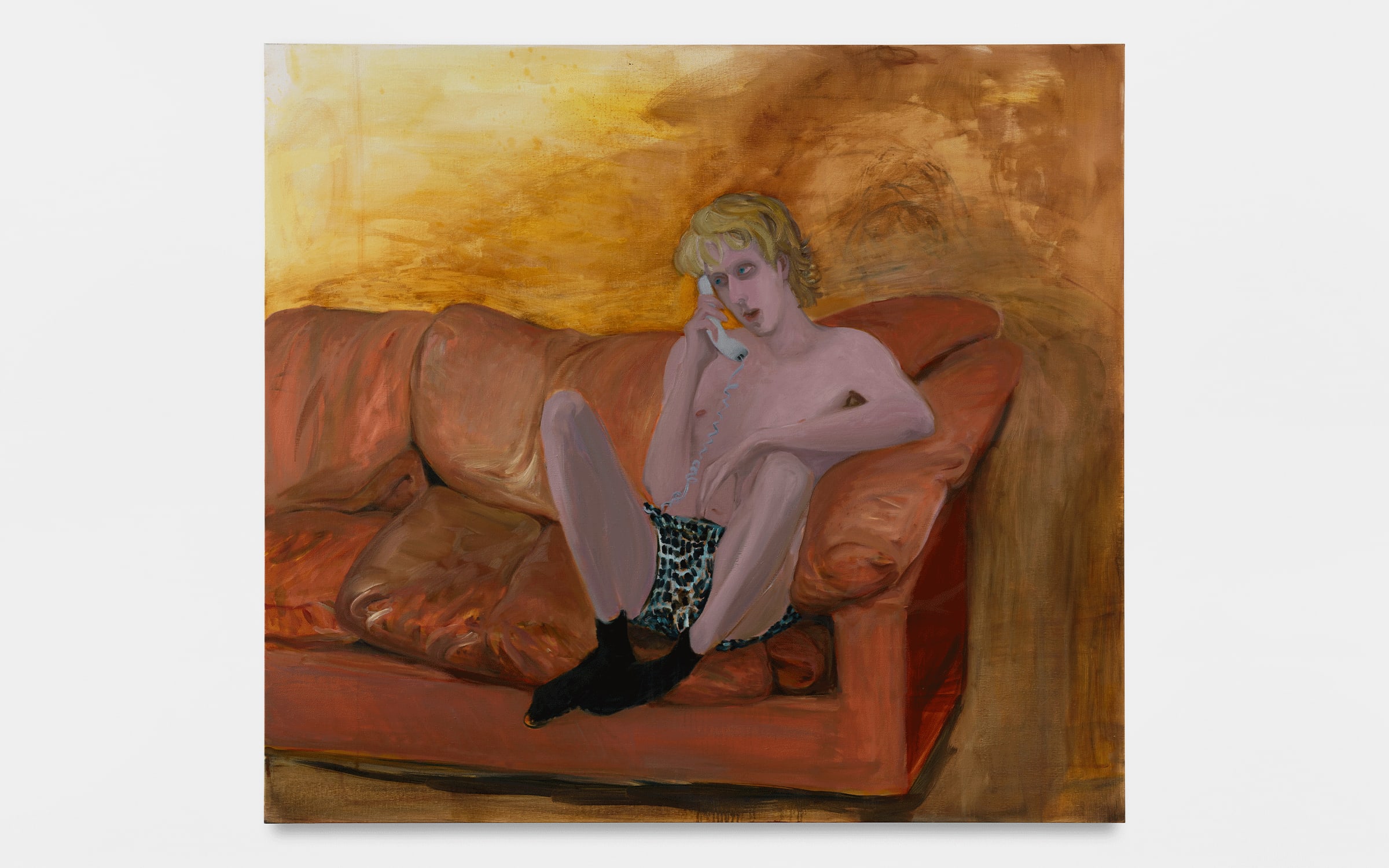
Born in Wuhan, China, and trained in Beijing and the US, painter Xinyi Cheng has garnered much attention since her residency in 2016–2018 at the Rijksakademie in Amsterdam. Now based in Paris, she often takes inspiration from real-life encounters, developing them into phantasmagorical situations featuring anonymous bodies – men, dogs, horses – caught together in moments of stasis and activity, infatuation, and bewilderment. In Landline (2021), a languid, blond youth is depicted mid-phone call, sitting on a couch in his underwear – the intimate, charged atmosphere is one that resounds throughout Cheng’s work. With her choice of palette and brushwork, she delights in capturing the tension in the tiniest details of the everyday, transporting the viewer into the recesses of her chosen subjects’ lives.
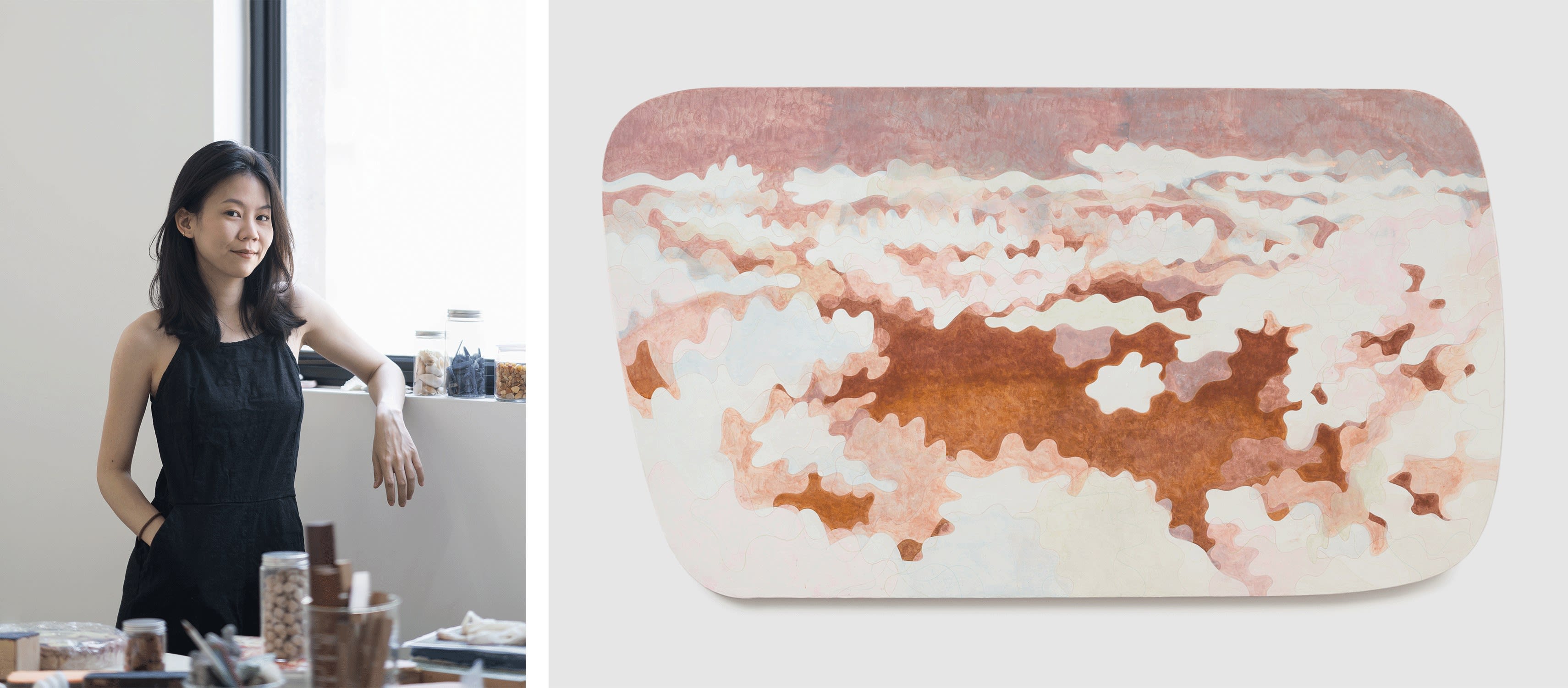
Su Yu-Xin’s paintings evoke place, poetry, and power. To attempt to summarize her work feels clumsy, and inevitably overlooks aspects of the artist’s practice. ‘Conceptual landscape’ falls short, for these are as much critical-conceptual strategies as material manifestations of her love of painting at its most labor intensive. Su’s tableaux, oftentimes rendered on wood, evoke memories of displaced or vanished dwellings and cataclysmic events - in one case, a volcanic eruption, which quite literally gave birth to the materials used in the painting (Smoke Engulfs, 2022). Now based in LA, she is originally from Hualien, Taiwan; She studied for her Masters at the Slade School of Fine Art in London, while her undergraduate education took place in Taipei. Her initial training in traditional ink wash is evident in her airy compositions, while an ongoing series of book-sized paintings, convey her fascination with literature. Throughout her work Su blends a diverse range of concepts and materials to highly original lyrical effect.
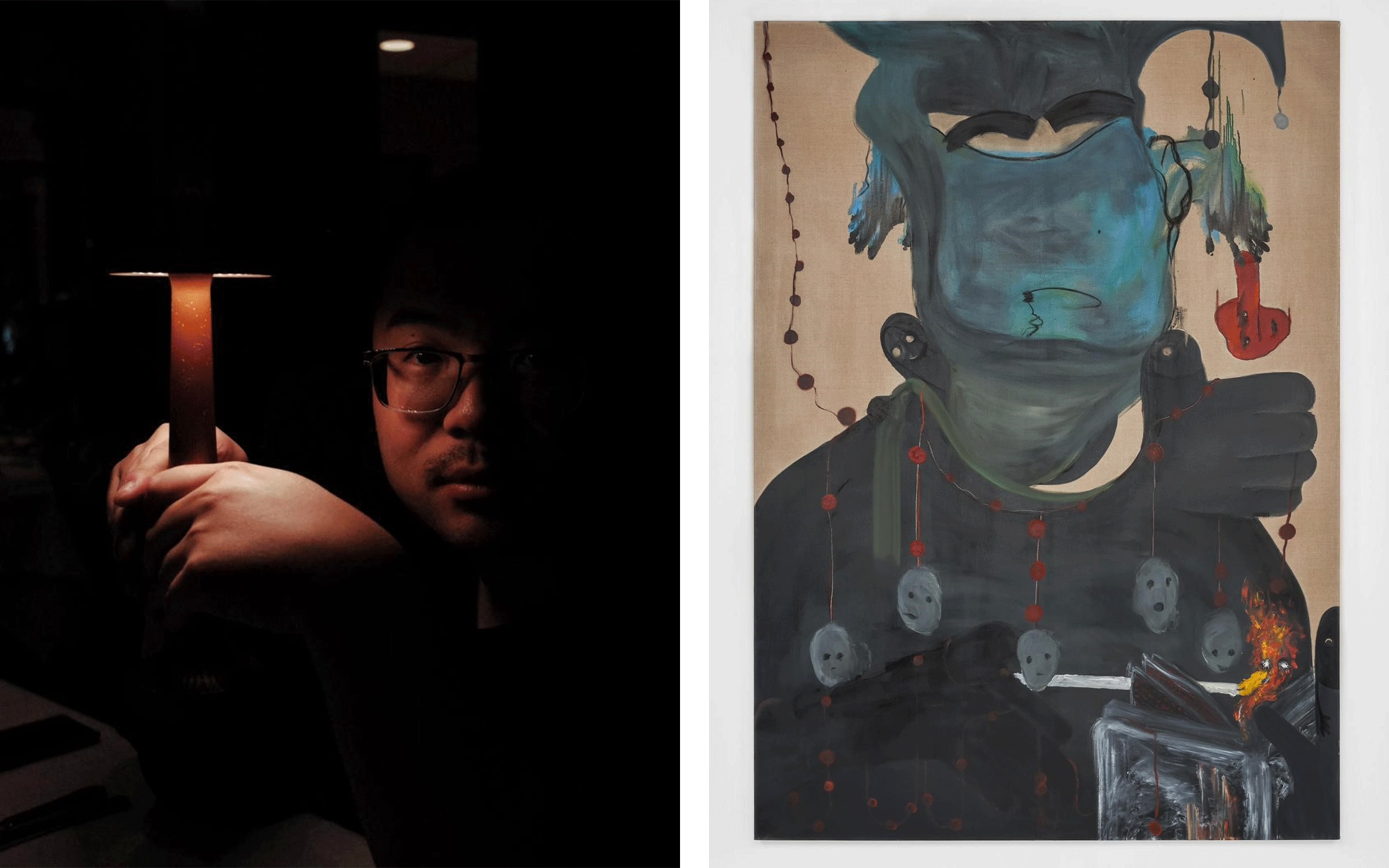
Everything Owen Fu paints and draws, is a form of self-portraiture. Where is the boundary between the self and the outside world? Fluid lines course through Fu’s canvases, betraying his calligraphic training (imparted by his father), as they fade in and out of focus to give shape to marks that become nipples, crotches, penises, and fish. Born in Guilin, China, Fu, moved to the US to study, first in Chicago, then onto Pasadena for postgraduate studies; He now lives and works in LA. His figures evoke joy and melancholy – the initial impression of cuteness, gives way to a feeling of loneliness and longing. In Fu’s work, there is an undercurrent of wry self-deprecation but above all, a sense of freedom.
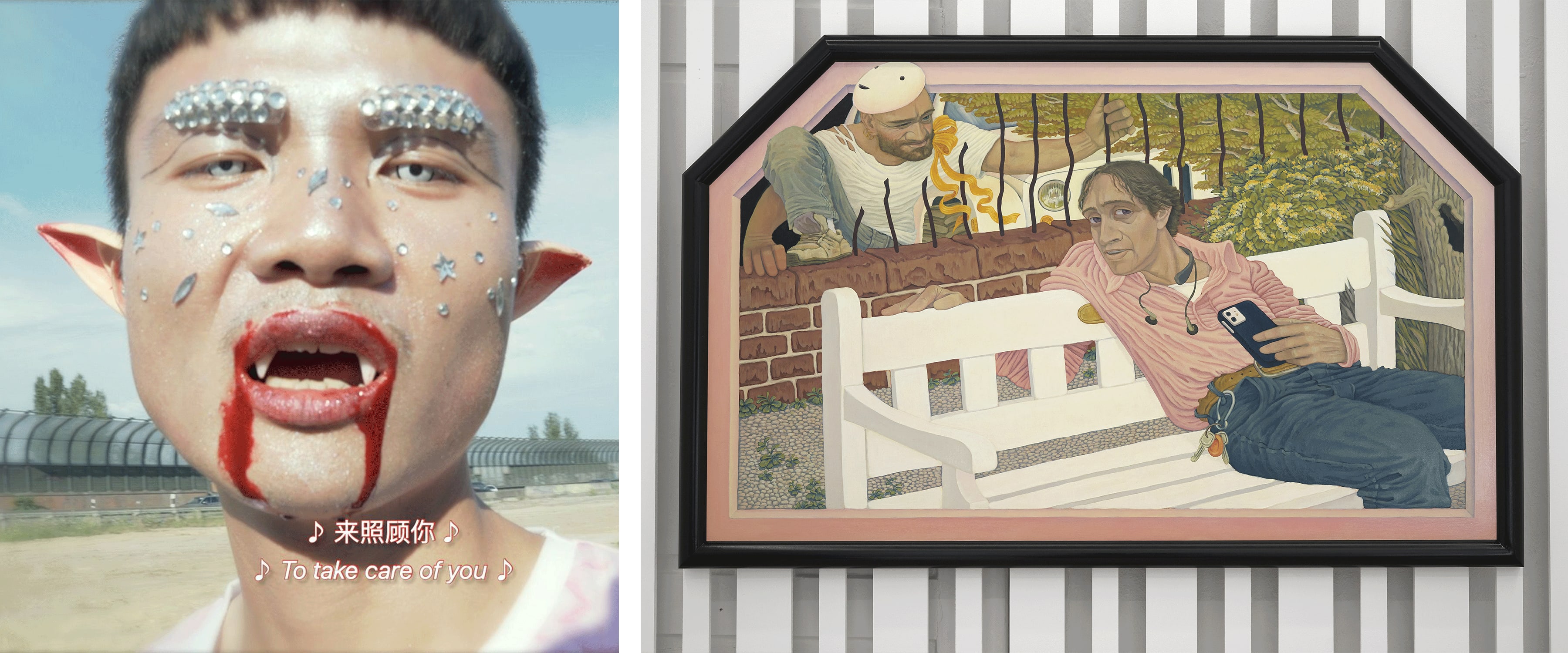
Yong Xiang Li’s paintings, which often double as furniture, are at once meticulous and chunky, earnest and cunning. An interest in applied arts, first developed while still in his native Changsha in China, led him first to study design at Central Saint Martins in London, before enrolling in the Städelschule in Frankfurt. Having graduated in 2020, he continues to live in Germany. Following a sudden pivot to ‘fine’ art, his position as a member of a racial minority in Europe enabled him, despite a lack of formal training, to turn a destabilizing sense of otherness into a working strategy. This deliberate othering operates on multiple planes. It is present in the act of masquerading a painting as a bench or a mirror, thereby spoiling the ‘purity’ of the painted canvas. It is also evident in his choice of subjects and signs, laden with histories of Orientalism and fetishism, that confront viewers with old power structures that have never gone away. The seriousness of Li’s labor might at times prevent his work from being immediately seductive, but his world, once entered, abounds with intricate thoughts and patterns that urge you to reconsider the subject- and objecthood of painting and peoples.
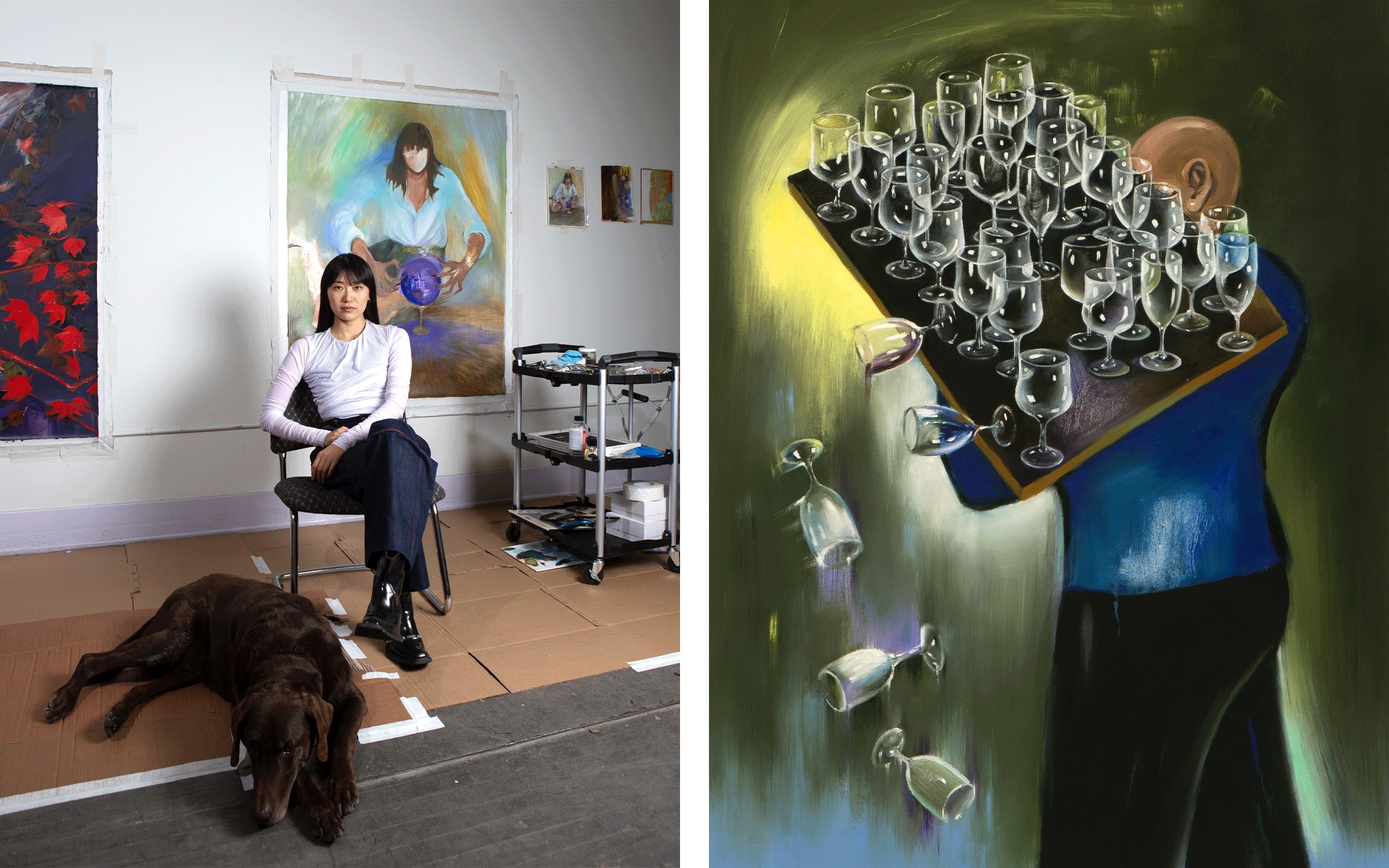
Xinyue Yan studied in Guangzhou, China, London, and Antwerp, Belgium, before moving to Shanghai in 2019, and then onto her current base of LA in 2022. This markedly metropolitan trajectory has doubtlessly influenced the development of her work, which zeroes in on our hedonistic cravings – for love, wine, and all the things that are supposed to make up the so-called ‘good life’ – amidst the chaos and absurdity of urban living. In Glasses Crisis (2021) a waiter holds a precarious tray with one too many wine glasses, several of which are tumbling into a void, and in her latest series, inspired by downtown LA, a voyeuristic gaze alights upon people doping and dancing behind the windows of the area’s famous art deco buildings. Yan’s work weaves dread, irony, and hilarity through a magical realist world overflowing with technical improvisation, a willing embrace of the ‘bad’ and ‘ugly,’ and a fearlessness with regard to accidents and clashes.
Alvin Li is a curator and writer based in London.
Published on March 8, 2023.
Caption for full-bleed images, from top to bottom: 1. Owen Fu, 12775 (detail), 2022. Photograph by Martin Wong. © Owen Fu. Courtesy of the artist, Gagosian (Hong Kong) and Antenna Space (Shanghai). 2a (desktop version). Yan Xinyu, Give Me One More Glass, 2022. 2b (mobile version). Yan Xinyu, Glasses Crisis (detail), 2020. Copyright of the artist. Courtesy of the artist and Capsule Shanghai (Shanghai).